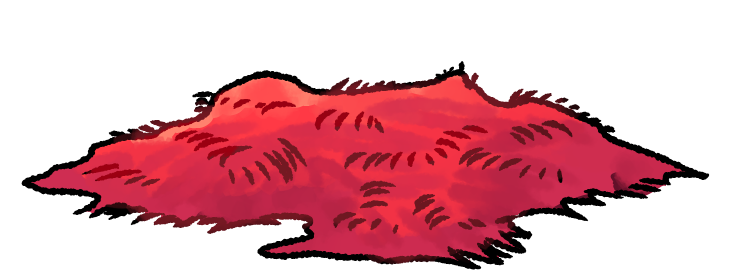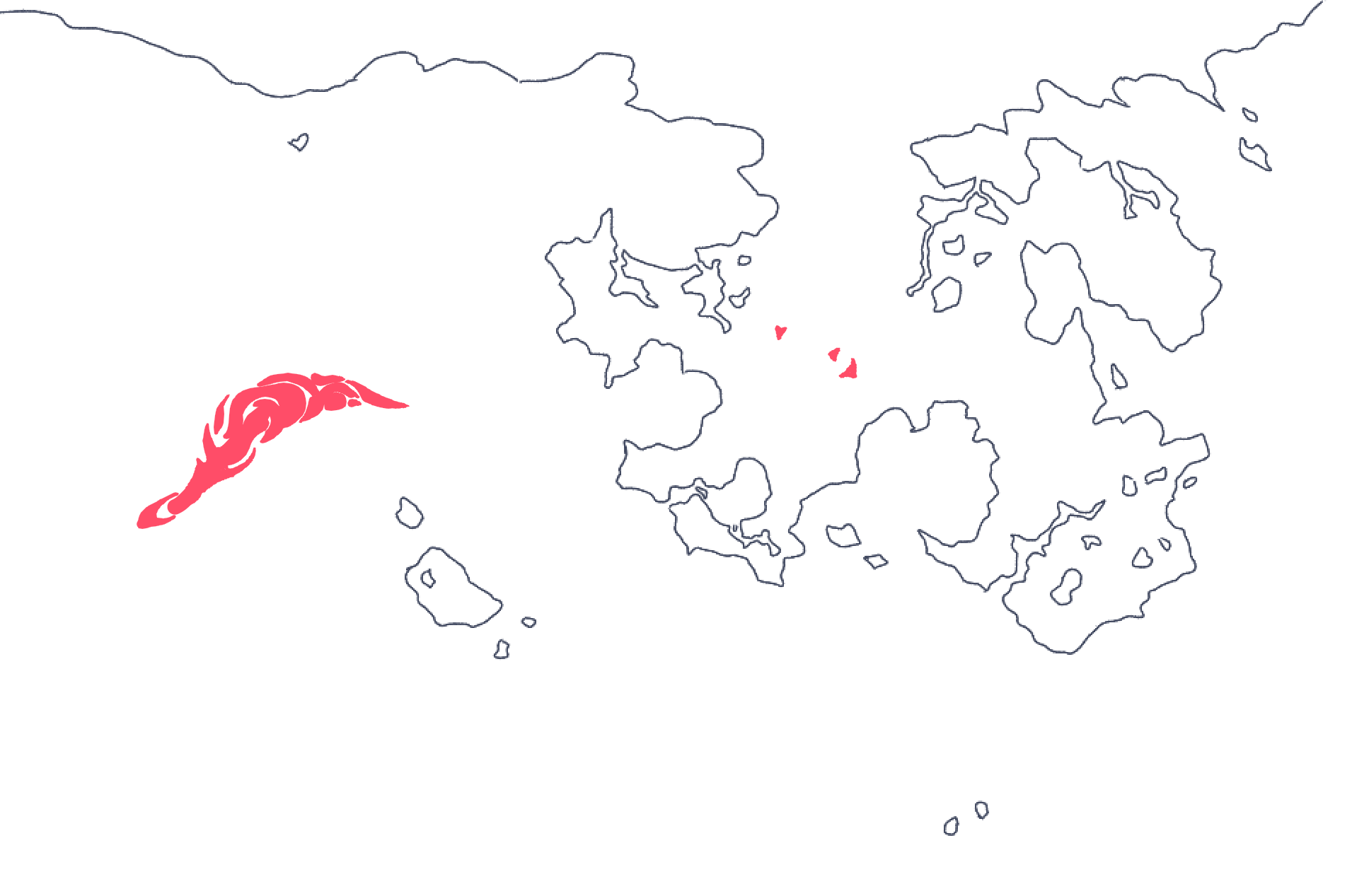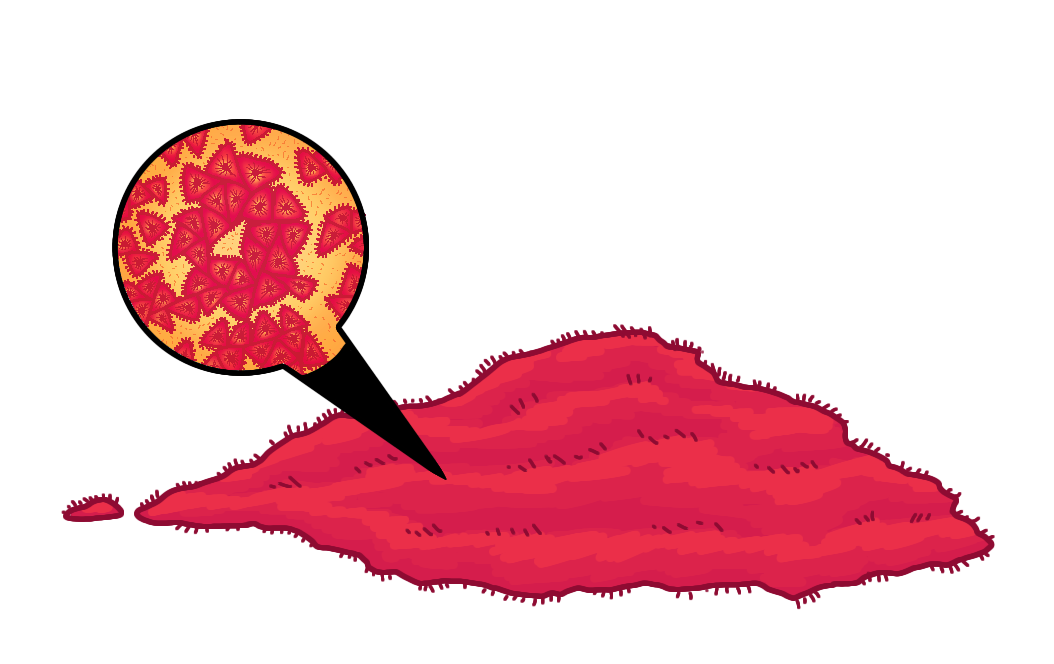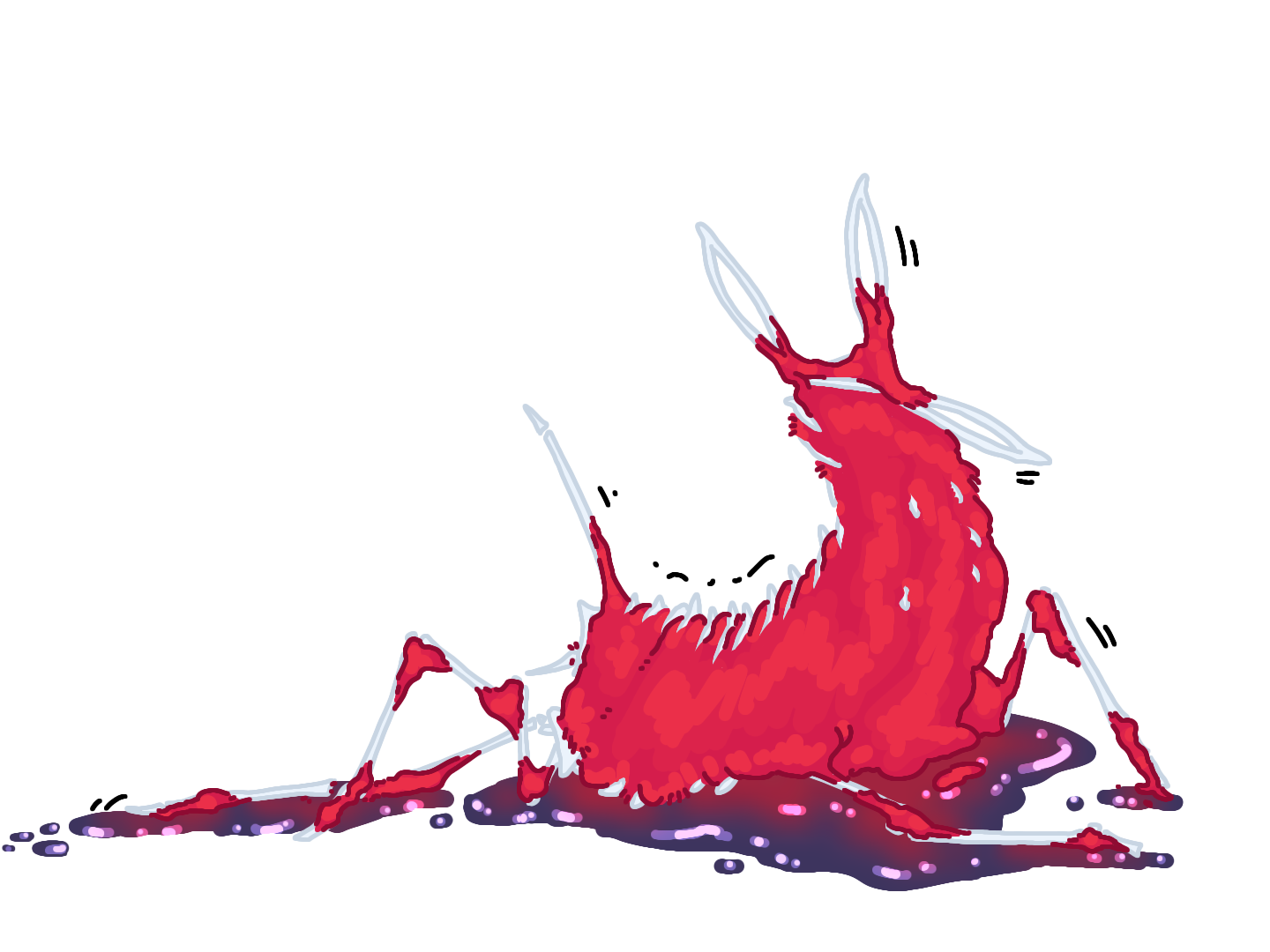Brine Matting
still a WIP... a big one...
This page is dedicated information about the brine, in terms of anatomy and behavior.
Anazoogon vermiculum ssp. confibulensis
Overview
One of the strangest inhabitants of Confibula, the brine matting is a kind of superorganism that inhabits hypersaline waters and stains them blood-red. Their metabolic pathways produce enormous amounts of CO and other gases. They're believed to be the reason that Confibula's atmosphere has so much CO in it. The carbon monoxide clouds formed by the brine mats turn into rolling "walls" of oxygen-absent fog that travel across the world, though since most Confibulans have blood that doesn't bond to CO, it doesn't matter much for them.

Range
The brine and saltpan regions of Confibula are mostly populated by microbes instead of large organisms. They don't appear anywhere else in the world.

Diet
The brine matting is believed to be autotrophic, but it can also be a decomposer too.
Anatomy
Most of the time, these organisms are unicellular but can congeal into a large unit. This "gestalt form" is made of stringy filaments that can contract and relax. They have no specialized structures otherwise.

Art by box0w0
Reproduction
The brine matting reproduces asexually like many earthly bacteria do.
Behavior
For most of the year, the brine matting exists as unicellular soup in the salty waters on the world. After the autumnal equinox, they form enormous floating islands of biomass which are also known to grow over animal remains, appearing quite like musculature. The mats can move, but not very quickly.

Art by box0w0